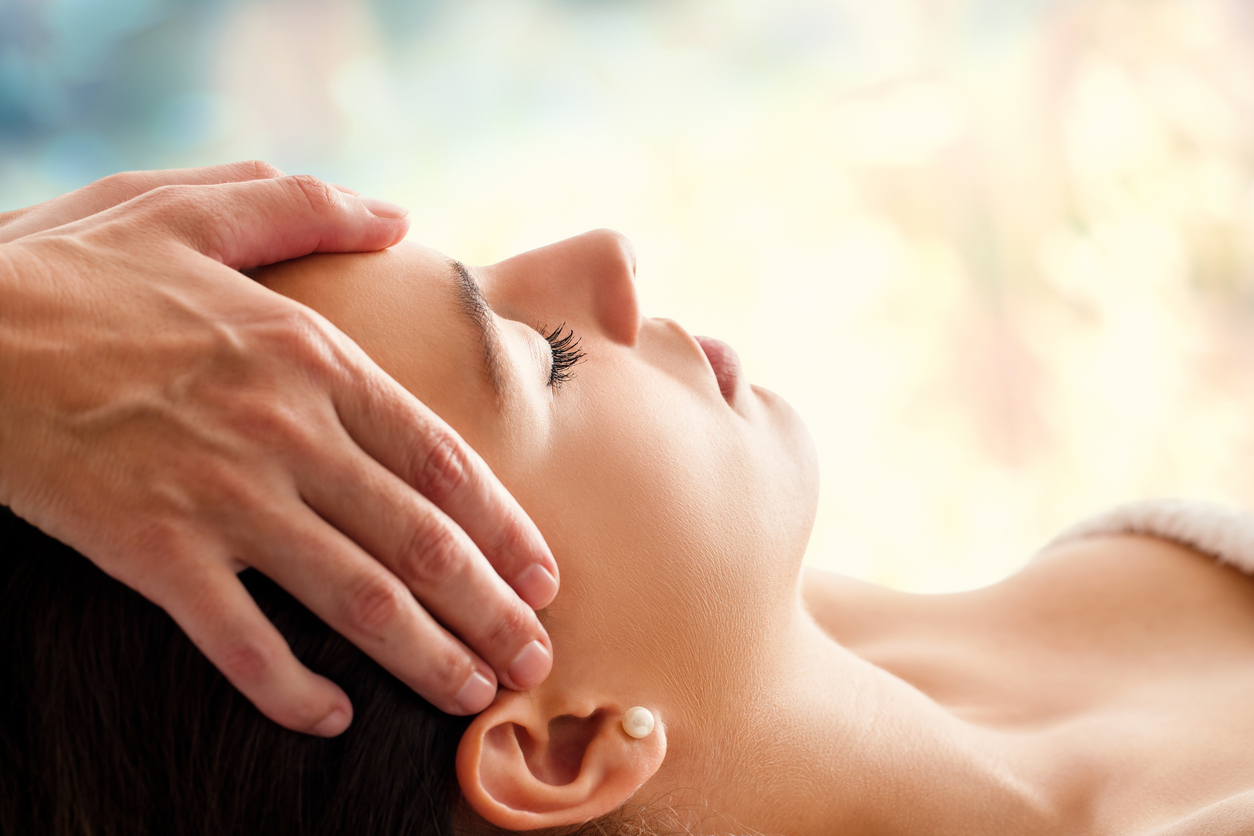Head and Neck Pain
06 July 2023

Neck and head pain are common in people of all ages. At Brixworth Osteopathic Clinic a recent clinical audit has shown that head, neck (and shoulder) pain is the most common a presentation to the clinic overtaking low back pain. This is quite some change, but perhaps not so unsurprising as we spend more time behind our desk, on lap top, driving or staring at a new generation of mobile devices. We are also pleased to be able to demonstrate to our patients that our paths are effective in treating both head and neck pain. The National Institute for Health and Care Excellence (NICE) also agrees that Osteopathy may be effective in treating neck and shoulder pain.
“Many people like me who are young and work at a desk over 5 days a week, suffer with back and shoulder pain. I was sick of being in pain every day. I suffered with intense migraines, some so bad that I have been prescribed morphine from the doctors.
Gordon at Brixworth Osteopathy has literally changed my life. I'm no longer in pain, I feel young and free again, I feel active, I feel happy and I have my love for life back all because I am not in pain. I am managing my pain through osteopathy, good eating and mindful living”
— Sophie (28)
There can be a variety of reasons for neck discomfort including working all day bent over a computer, driving long distances, poor posture while standing or sitting, stress, tiredness and “tech neck” are all factors that can cause the muscles in the neck and upper back to become tight and the joints to become stiff, which can contribute to ongoing neck pain.
Sometimes a nerve in your neck can become irritated and cause pain in the arm going down into your shoulder or the hand, and may be accompanied by pins and needles and numbness. Some headaches can be the result of tension or stiffness in the neck and upper back. As we reach a certain age we may suffer from cervical spondylosis, a medical term that describes natural age-related wear and tear (osteoarthritis) in the neck, which does not necessarily lead to neck discomfort, however coupled with other factors, it can lead to muscular pain from the neck into the shoulder as well as some stiffness in moving the neck.
Whilst there there are several reasons for headaches most are not serious and once the cause is established headaches can often be helped by simple changes in lifestyle. Osteopaths are skilled at diagnosing the type of headache or migraine the patient is experiencing and, where appropriate, following differential diagnosis that excludes the potential serious cause of headache, will allow an osteopath to use a number of techniques to relieve the symptoms. What’s noteworthy and sets osteopath’s apart from some other practitioners is the 4-5 year diagnostic training that affords the osteopath the necessary skills to exclude more serious causes of headache.
Headaches can often be caused by increased tension of the muscles of the neck and restriction within key joints which then irritate the nerves leaving the upper neck to supply the head (cervicogenic or tension headaches). Congestion in the sinuses can also cause headaches (sinus headaches). Although the cause of migraine is not clearly understood it is clear there are triggers that can facilitate a migraine and there are vascular constrictive mechanisms that can be considered.
Where can neck pain be felt?
Your neck is made up of seven vertebrae which form the cervical spine (C1 – C7) and these stack up in a column, cushioned with discs to absorb shock and to facilitate optimal range of motion of the head and neck. They connect your skull to the upper part of your spine and also contain and protect the spinal cord. If you consider the surrounding tissues and the weight it carries (5kg for the average head in a neutral posture and significantly more if bending forward), your neck is both delicate and incredibly strong and flexible.
Any injury to, or pain in, the neck area can radiate beyond the neck into the skull, down the back, into the arms, hands and across the shoulders. Symptoms can include headache, difficulty or pain when moving the neck, particularly when turning the head to look sideways.
What can cause neck pain?
Neck pain, injury or stiffness can occur for many different reasons. It’s a fairly common ailment and most of us will have experienced some degree of neck pain. The most common reason is posture related strain, often brought on by sitting in a hunched or slouched position for long periods. Sleeping with your neck at an unusual angle or with a poor pillow can often aggravate this type of pain as well.
In these instances, the pain can recede fairly quickly as your muscles and joints recover in the short term, so you don’t often feel the need to seek medical help. The best remedies for this type of pain are to sit straighter, take breaks, check your desk ergonomics and chair position, make sure your pillow is supportive – and not to lie on your front if you can avoid it. Sometimes advice regarding a good pillow is all that is needed!
Sitting for long periods, stress and tension can also lead to a tightening of the shoulders and jaw which over time can lead to tight muscles and a stiff neck. Patients can also experience other symptoms when they have a painful neck. It is common for people to develop headaches, light-headedness and dizziness, as well as stiffness and limited movement.
There are also more significant causes of neck pain that do not always resolve on their own. Chronic muscle imbalances may require manual treatment and targeted exercises to resolve. Strain to the joints in the neck from injury, overuse or wear and tear can also require direct treatment. In such cases inflammation may develop in the joints and surrounding tissues that can cause significant discomfort. It is common for such pain to radiate elsewhere and cause more complex pain. Hands on treatment from an osteopath can quickly and effectively help to reduce the pain associated with such problems and change the mechanical factors that may have led to the problem developing in the first place.
The shock absorbing discs may also become strained. As with low back disc strains, these can be painful themselves, but more commonly they can affect nearby nerves which may result in pain, tingling and possibly numbness and weakness into the shoulder or arm. Such conditions require careful assessment, diagnosis and management by someone like an osteopath, so that you are able to receive the best treatment to help resolve the problem.
How can you treat neck pain?
Most neck pain will dissipate within a few days. You can help it along by being aware of and improving your posture and stretching your neck muscles. Usually in the first 48 hrs applying ice to the site of pain will reduce any inflammation. After the first 48hrs it may be more appropriate to apply heat to the affected area to warm and relax the muscles. Massage can help alleviate the tense muscles and pain killers or anti-inflammatory medication can quickly alleviate pain in the short term. You should also take a look at your posture and work environment. A few simple adjustments and a little awareness may be all it takes to rid yourself of your pain.
When problems do not resolve on their own you may need to seek help. An osteopath will take a holistic approach, looking at your whole body and the environment that you live and work in. They will carefully diagnose your problem and, assuming that your problem is amenable to osteopathic treatment, will manage your problem with a range of approaches, including ergonomic advice and exercises to strengthen and stretch specific muscles, alongside focussed treatment to enable the body to adapt to and recover from the cause of the problem.
If your pain persists or there is something more worrying to your osteopath then they may advise that you should be referred on for an expert consultation to exclude other potential issues.
Treatment from an osteopath may help. Gentle massage to the tight muscles and manipulation to loosen the joints of the neck, thorax and back can relieve the build-up of muscular tension that may lead to headaches. Osteopaths can also advise on exercise and lifestyle changes and offer guidance on simple changes to your posture when at work or driving which may help.

What types of osteopathic treatment are appropriate for neck or head pain:
- Cervical soft tissue massage of the para-spinal (either side) tissues of the neck to help relieve the spasms of tension headaches.
- Occipital decompression involves using the fingertips to manually stretch the para-spinal tissues at the base of the occiput (bone at the back of the head at the top of the neck). This often works well in some patients to abort migraine headaches and can be taught so patients can perform something similar at home to prevent further headaches.
- Myofascial unwinding is a technique that literally unwinds the tissues encasing muscles in spasm. ‘
- Spinal articulation and manipulation - as appropriate small joint releases can be created by the Osteopath to relieve muscle tension, help the spine move more segmentally and relieve pain. Osteopathic manipulation can be effective for headaches and is evidence based.
- Cranial osteopathic techniques can also be used to re-balance the equilibrium or the spine and cranium, to ease the symptoms and return the patient to good health.
